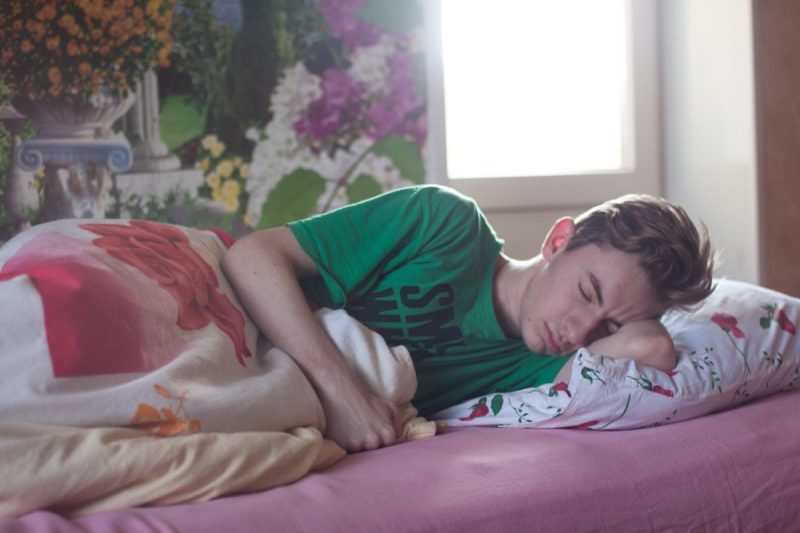There is seemingly no escape from the modern world’s constant commotion. Engines revving. Horns honking. Dogs barking. Crowds yelling. When the world’s unceasing din becomes too much, listeners are leaping to streaming platforms to soothe scattered minds.
On platforms like Apple, Amazon, and Spotify, you can find sleep-inducing relaxation via the sound of static, cricket songs, and falling rain to sedate your too-stimulated brain. So many people are tuning in to multi-hued noises; in fact, Bloomberg reports that white noise podcast producers are rolling in the dough. Whether it be white noise’s hiss, pink’s rustling leaves, or thunder in the brown spectrum, these often anonymous audio entrepreneurs purvey a world where your type of silence rules. Should you be listening?

Silence does factor in when creating the perfect calm and cool sleep environment.
White (and other colored) noise refers to sounds that contain all frequencies across the spectrum of audible sound. Because white noise spans these audial bands, it can also be referred to as broadband noise. A good example is the predilection to listening to the static that comes from an untuned radio or television. Pink and brown noises are similar broadband sounds that are stronger at the low end of the spectrum. Included here are a myriad of natural sounds, such as falling water, heartbeats, thunder, and strong wind.
These continuous, whispered noises seem ideal to fall asleep to. When researchers conducted a systematic review of all studies examining the relationships between continuous white noise or similar broadband noise and sleep, the quality of evidence for continuous noise improving sleep was very low, which contradicts its widespread use.
Still, these are lab results found in a static study. When exposed to an external cacophony, sleep scientists found that white noise can help cancel and soothe the surrounding sounds. According to the Centers for Disease Control and Prevention, more than one-third of American adults are not getting enough sleep on a regular basis. One of the significant causes of sleep disturbance is environmental noise. Listening to brown, pink, or white podcasts can create a buffer between outside noise and your eardrums, so you can keep snoozing peacefully, despite what’s going on around you.
These soothing resources also extend beyond sleep. Studies on white noise’s effect found evidence that it can reduce crying in infants, improve work performance, and help counteract symptoms of attention deficit hyperactivity disorder.

While science continues to study the potential benefits of these sounds, a few track makers are raking in the dough. Bloomberg introduces Todd Moore, who launched Tmsoft’s White Noise Sleep Sound Podcast in 2019. Today, the podcast enjoys approximately 50,000 listeners a day, which ranks him in the top 25% of all podcasts and pays him $12.25 per thousand listens. With 50,000 listens, this adds up to $612.50 a day and $18,375 per month.
Florida’s Brandon Reed started uploading white noise programming not to attract listeners, but to help his baby son fall asleep. It wasn’t long before the Spotify algorithm caught on, and it started pushing people to his show. Three years later and around 100,000 listeners play his show daily. What began as a cozy, soporific newborn sound blanket now regularly resides in Spotify’s charts in four different countries.
These calming noise crafters produce tracks using Spotify’s free hosting software, Anchor. This offering has inadvertently led to a surprise hit for the platform at the same time when the industry is searching for new sources of traffic. Apple podcasts actually beat the Swedish service to the punch, introducing soundscape subscriptions this year. The third streaming giant, Amazon, also invited itself to the party, investing in exclusive meditation and other wellness-related
If you’re in the mood, there are plenty of free casts still to be found to sleep better at night. Just make sure you monitor its effect. And if consistent, broadband sounds help you to sleep or aid calmer, more productive days, there’s no reason not to reward some of your favorite makers.



